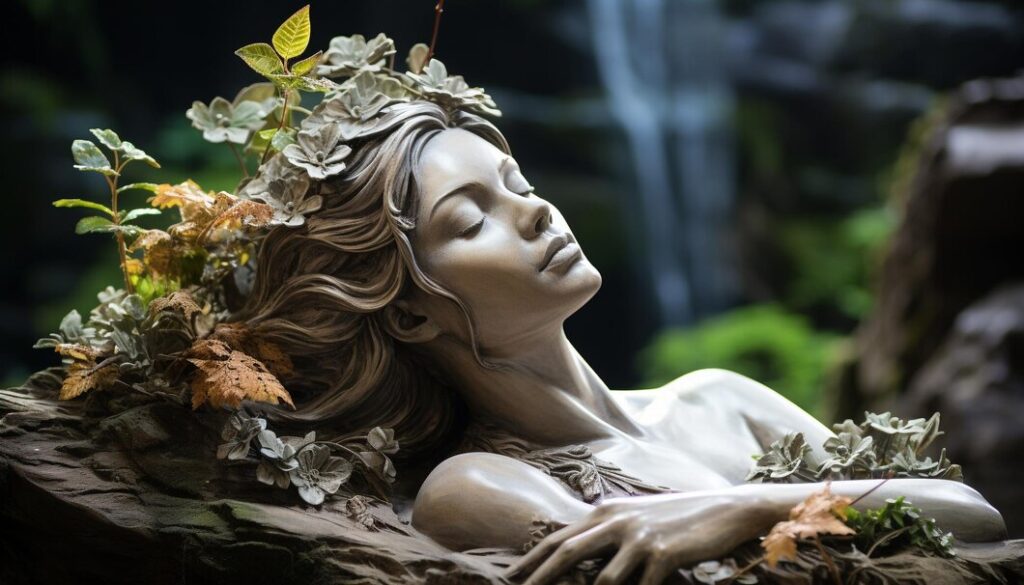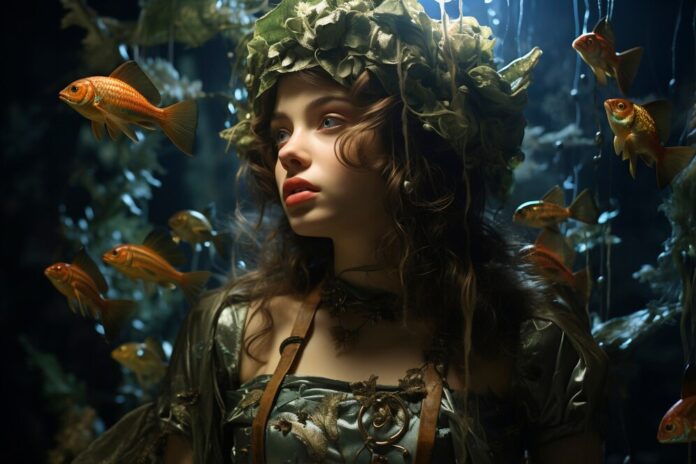Nymph refers to an ancient Greek deity, a minor goddess who has been populated to earth and ranked just below the gods. Nymphs control various natural phenomena such as clouds, trees, springs, meadows, and beaches, according to Greek mythology. So, how to tell if a woman is a nymph? You simply uncover the qualities, spirit, and energy a woman possesses and can symbolize her as a nymph in a mythological sense, though not literally.
How to tell if a woman is a nymph—a spirit of an Olympian God

Nymphs, the Olympian God, take care of animals and plants, and they are closely associated with gods of nature such as
- Artemis
- Poseidon
- Dionysus
- Demeter
Nymphs are associated with springs. So, people believe that they have healing properties with divine powers. Although we assume nymphs are deities with spiritual influence, they are not immortal. They are often present alongside God and Goddess in mythology as major attendants and lovers of God and other deities.
The Categories of Nymphs

- Anthusae is the daughter of Nereus and Doris, and she is a beautiful nymph, a goddess with hunting knowledge. She has such a lovely beauty that everyone desires her once they set eyes on her.
- Aurae are the nymphs of breezes and the daughters of the river Okeanos or Boreas. They are only realized by sounds and force, invisible in nature.
- Bacchae Nymphs are the group of female followers of God Dionysus.
- Dryads Nymphs stay in trees and forests. They are also known as Oak Tree Nymphs. There are other subgroups of nymphs based on their dwelling nature, such as Meliae (ash tree nymphs), Alseids (grove nymphs), or Oreads (mountain nymphs).
- Haliae Nymphs stay on sea, sand, and rocks. They protect fish and other sea creatures.
- Oceanid nymphs preside in sources of fresh water on earth, moist breezes, and even rain clouds. They are the daughters of Oceanus and sisters of the God River.
- Potameides Nymphs, who are present in rivers, lakes, and water streams and classified as a type of Naiad. They are the attendants of the Potamoi fathers, and some of the polyamide river nymphs are such as Leda and Tiasa.
How to tell if a woman is a nymph—a belief in Hindu mythology
Just like Greek mythology, Hinduism also personifies nature as women, deities who protect the earth. The rivers originated from the high altitude of the Himalayas and, flowing through the widespread region, creating and saving the lives of millions of species, are worshiped as goddesses in India. The sacred rivers Ganga and Yamuna are believed to be goddesses in the form of women on earth.
The literal name only differs; in Greek it’s Nymph, and in Hindu mythology it is “Dev”i. The goddess of nature is the same but is idolized in the different form of a woman in various mythological traditions across the world.
How to tell if a woman is a nymph: it’s spirit, not fantasy.
So if you have ever wondered how to tell if a woman is a nymph, do not hesitate; it is a beauty of her spirit. It’s not about fantasy. Nymph symbolizes a young woman who is equally beautiful and powerful. The term “nymphomaniac,” short form “nymph,” is used as slang, and we often get confused with its actual definition. However, there is no such scientifically recognized medical condition as “nymphomaniac” that signifies excessive intimate craving.
Nymph or Fairy, a Tale of Fair Folk
Arts, literature, and fiction often present nymphs as women of supernatural power with seductive beauty and present them as a symbol of romance in Greek mythology. On the contrary, fairies are pretty, magical women who are mostly inhuman in nature but represent goodness. Fairies belong in forests and give blessings for kind acts and are mostly believed to be present in European culture.
Sometimes people categorize Nymph and Fairy in one group that is “Fair Folk,” but both of them signify decency with magical power, magnificent beauty, and divine being. The symbolism is the same, but the imagination of people across the traditional culture makes the difference.
Are nymphs good or evil?
Nymphs are neither good nor bad, but they protect nature and flora. They are beautiful young maidens who stay in mountains, groves, rivers, trees, and valleys and who love to dance and sing like humans. They are responsible for keeping the balance within nature. They are the graceful women with pleasant appearances.
Their magical spirit is not harmful to humans, and they do not play any tricks on people. Most Nymphs are believed to be friendly in nature and bless people they liked though they present in mythological belief only. There is no real-life existence of Nymph now.
Sleeping Nymphs, Blend of Art and Culture
Sleeping Nymph is an excellent piece of Roman art, a statue of a female figure. It is partially nude and draped by clothes from the waist. She kept her right hand on her left shoulder. This fantastic Roman sculpture was probably made from the inspiration of a Hellenistic model. This ancient art is invention of approximate 140-160 A.D. With a height of 33 cm and a width of 97cm, this statue of a sleeping nymph is really an incredible creation of humans.
Final Thoughts
So, the questions and lots of conflicts come to mind when we think about how to tell if a woman is a nymph. But now is the time to change our mindset. It is a mythological belief of ancient culture of representing beautiful, super powerful women who are balancing nature. They are the divine spirit and are found in the art and literature as an innovative representation.
Frequently Asked Questions
Q1. Who are nymphs?
Nymphs are minor female deities who protect nature, trees, water, rivers, and mountains and are often found associated with God.
Q2. Do nymphs really exist?
Nymphs exist in Greek mythology, and it is a belief of people. Other religious cultures also possess the same thought of personifying God in women’s form, like Christian (fairy) or Hindu (Rriveras Devi).
Q3. Is this Nymph slang language?
Some people use it as slang language, but there is no recognition of it literally or scientifically.

